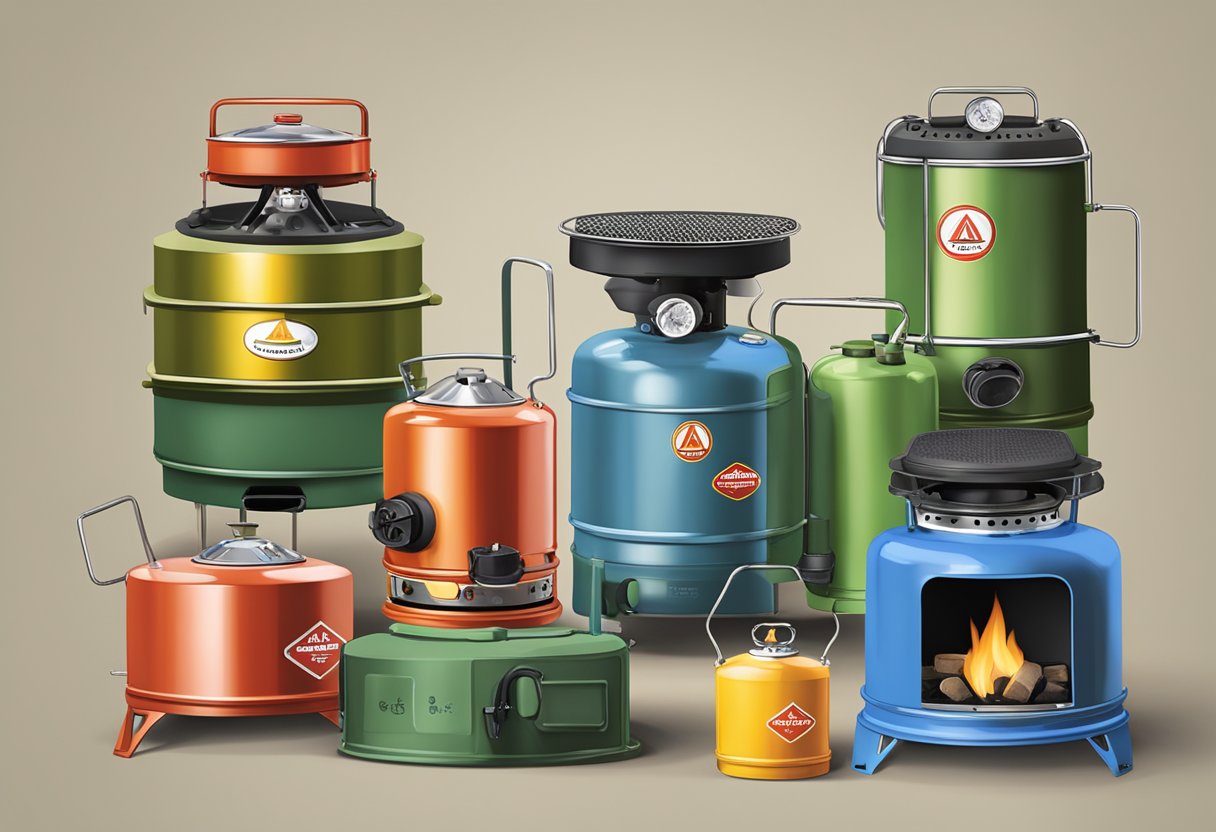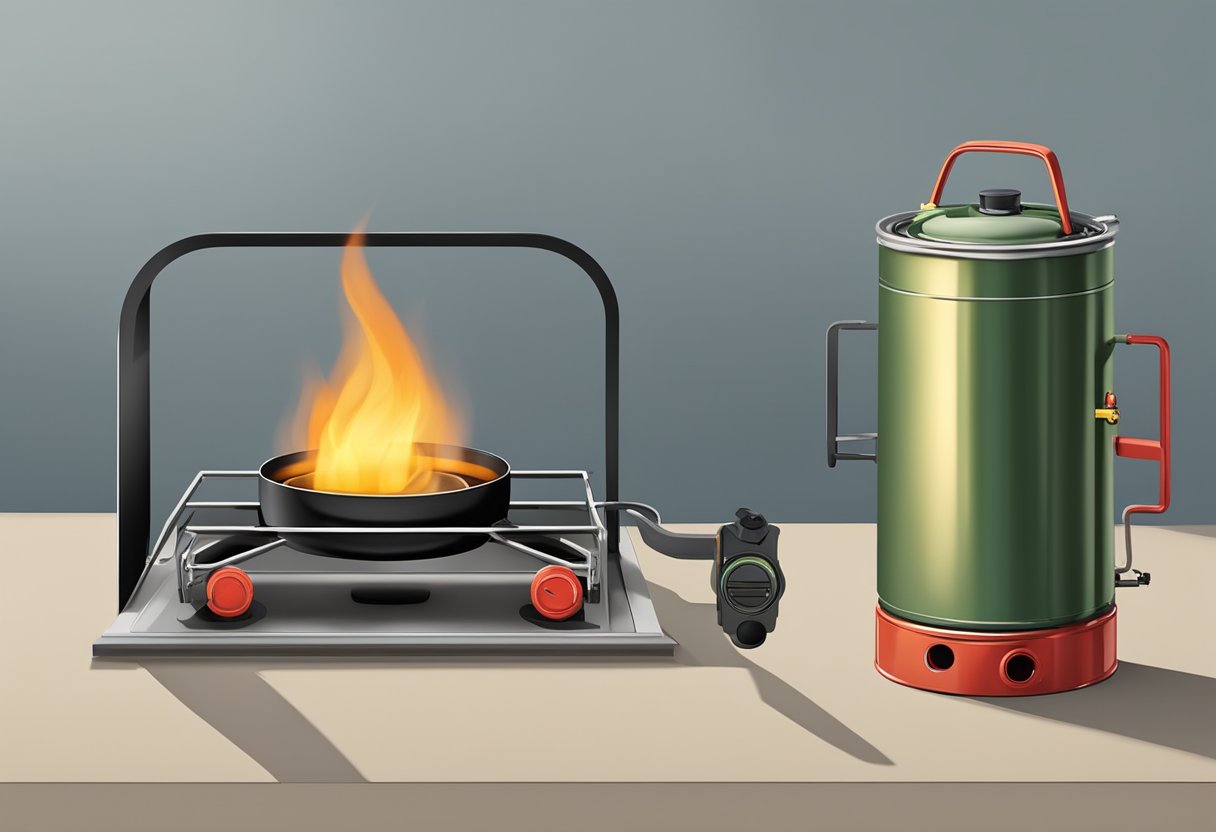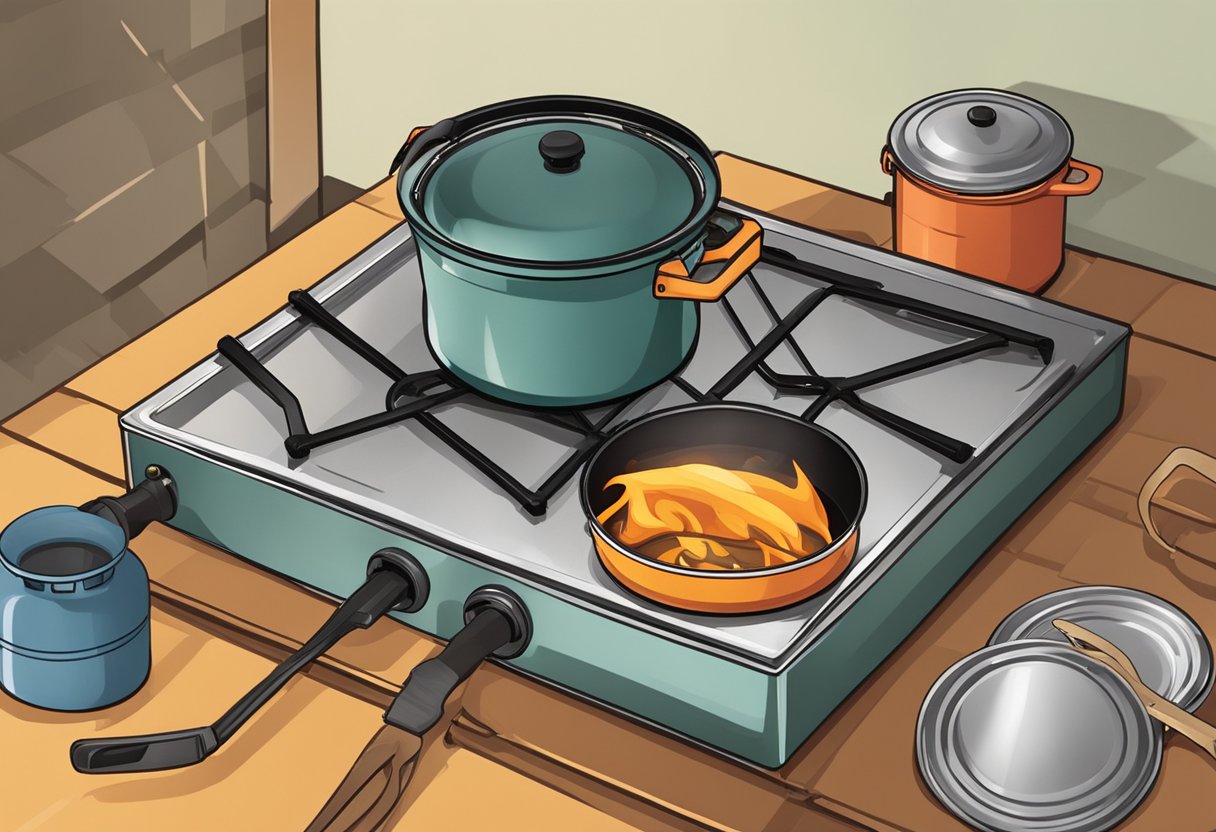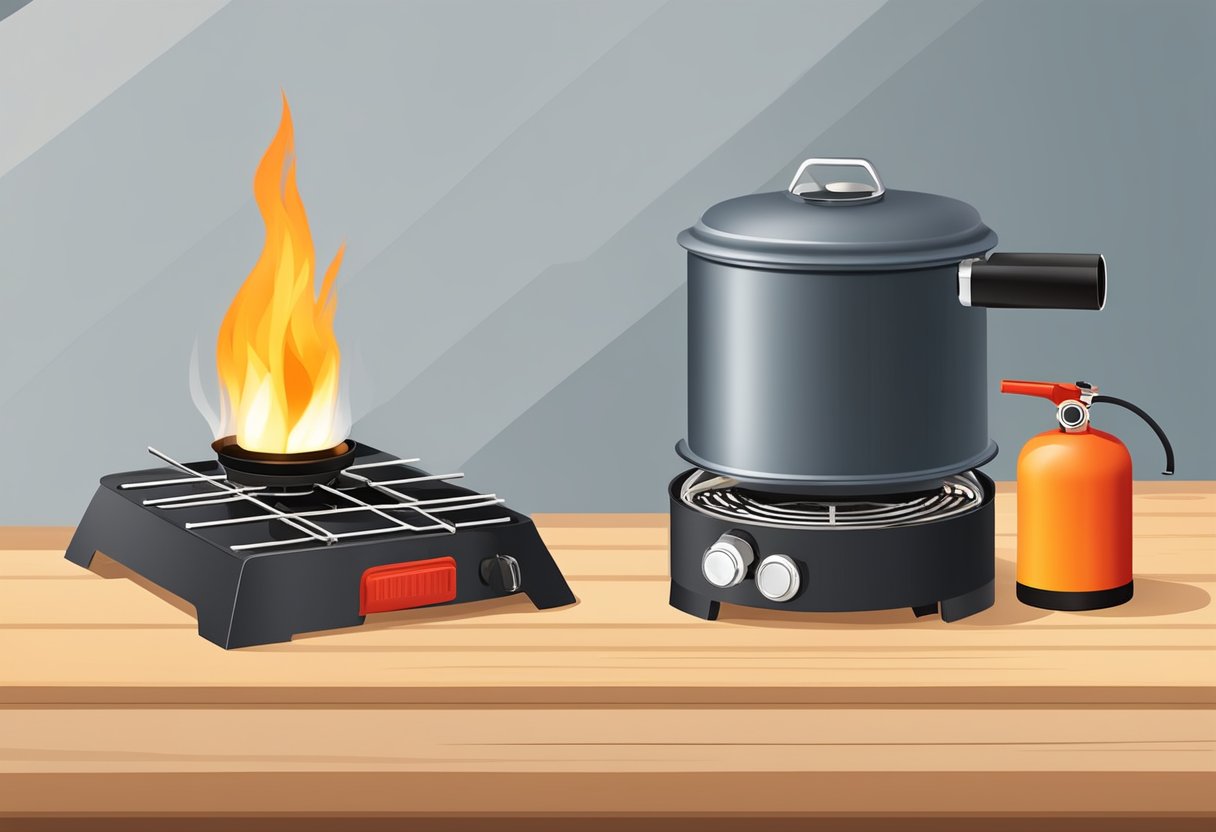Camping is a popular outdoor activity that many people enjoy. It offers a chance to disconnect from the hustle and bustle of everyday life and enjoy nature. One of the essential items for camping is a camping stove. It allows campers to prepare meals and enjoy hot drinks while spending time outdoors. However, many campers wonder if they can use a camping stove indoors.

Using a camping stove indoors can be dangerous if not done correctly. The main concern is carbon monoxide poisoning, which can be fatal. Carbon monoxide is a colorless and odorless gas that can build up quickly in an enclosed space. It is produced when fuel such as propane or butane is burned. Therefore, it is essential to ensure proper ventilation when using a camping stove indoors. In this article, we will explore the safety guidelines for using camping stoves indoors and if it is possible to use them safely indoors.
Understanding the Risks of Indoor Camping Stove Use
Camping stoves are designed for outdoor use, but sometimes, people may consider using them indoors due to various reasons such as power outages or limited space. However, using camping stoves indoors can be dangerous and may cause serious harm or even death. In this section, we will discuss the risks associated with indoor camping stove use and how to avoid them.
Carbon Monoxide Poisoning
One of the most significant risks associated with indoor camping stove use is carbon monoxide poisoning. Carbon monoxide is a colorless, odorless, and tasteless gas produced by incomplete combustion of carbon-based fuels such as propane, butane, and charcoal. When inhaled, carbon monoxide can displace oxygen in the blood, leading to headaches, dizziness, nausea, confusion, and even death.
To avoid carbon monoxide poisoning, it is essential to ensure proper ventilation when using camping stoves indoors. This means opening windows and doors to allow fresh air to circulate and installing carbon monoxide detectors to alert you in case of dangerous levels of carbon monoxide. Additionally, it is vital to never leave a camping stove unattended and to turn it off immediately after use.
Fire Hazards
Another risk associated with indoor camping stove use is the risk of fire. Camping stoves are designed to be used outdoors, where there is ample space and minimal risk of flammable materials. Using a camping stove indoors increases the risk of fire due to the presence of flammable materials such as curtains, carpets, and furniture.
To reduce the risk of fire, it is essential to keep flammable materials away from the camping stove and to use it in a well-ventilated area. Additionally, it is crucial to never leave a camping stove unattended and to keep a fire extinguisher nearby in case of emergencies.
Ventilation Concerns
Ventilation is a crucial factor to consider when using camping stoves indoors. Incomplete combustion of fuels such as propane can produce carbon monoxide and other harmful gases that can be harmful to human health. Therefore, it is essential to ensure proper ventilation when using camping stoves indoors.
To ensure proper ventilation, it is recommended to use camping stoves in a well-ventilated area such as a kitchen with open windows and doors. Additionally, it is vital to never use camping stoves in enclosed spaces such as tents or cars, as this can increase the risk of carbon monoxide poisoning and fire hazards.
Types of Camping Stoves and Fuel Considerations

When it comes to camping stoves, there are several types to choose from, each with its own pros and cons. The fuel type used by the stove is also an important consideration. In this section, we’ll take a look at some of the most common types of camping stoves and the fuel they use.
Propane Stoves
Propane stoves are a popular choice for camping because they are easy to use and provide a consistent flame. They are fueled by propane, which is a clean-burning fuel that is widely available. Propane stoves come in a range of sizes, from small backpacking stoves to large family-sized stoves.
One of the benefits of propane stoves is that they are easy to light and adjust. They also provide a consistent flame, which makes them ideal for cooking. However, propane stoves can be heavy and bulky, which can make them difficult to transport.
Alcohol Stoves
Alcohol stoves are another popular choice for camping. They are fueled by denatured alcohol, which is a clean-burning fuel that is widely available. Alcohol stoves are lightweight and compact, which makes them ideal for backpacking.
One of the benefits of alcohol stoves is that they are lightweight and easy to transport. They are also easy to use and provide a consistent flame. However, alcohol stoves are not as powerful as propane stoves, which can make them slower to cook with.
Liquid Fuel Stoves
Liquid fuel stoves are fueled by kerosene, white gas, or other liquid fuels. They are versatile stoves that can be used in a range of conditions. Liquid fuel stoves are popular with backpackers and mountaineers because they can be used in extreme conditions.
One of the benefits of liquid fuel stoves is that they can be used in extreme conditions. They are also versatile stoves that can be used with a range of fuels. However, liquid fuel stoves can be heavy and bulky, which can make them difficult to transport. They are also more complicated to use than propane or alcohol stoves.
When choosing a camping stove, it’s important to consider the fuel type as well as the type of stove. Propane, alcohol, and liquid fuel stoves are all popular choices, and each has its own benefits and drawbacks. By considering your needs and the conditions you’ll be camping in, you can choose the best camping stove and fuel type for your next adventure.
Safe Indoor Use of Camping Stoves

When camping, cooking food on a camping stove is a common practice. However, can you use a camping stove indoors? The answer is not straightforward. It depends on several factors, including the type of stove, the ventilation in the room, and the safety precautions taken.
Proper Ventilation Techniques
Proper ventilation is critical when using a camping stove indoors. The stove should only be used in a well-ventilated area, preferably with open windows and doors. It is important to ensure that there is sufficient airflow to prevent the buildup of carbon monoxide, which can be deadly.
Safety Precautions and Equipment
When using a camping stove indoors, it is essential to take appropriate safety precautions. One of the most important measures is to install a carbon monoxide detector in the room. This device will alert you if the levels of carbon monoxide in the air become dangerous.
Another crucial safety measure is to keep a fire extinguisher nearby. In case of a fire, the extinguisher can be used to put out the flames quickly. It is also important to keep flammable materials away from the stove, such as curtains, papers, and other combustible items.
Selecting Safer Alternatives
If you want to cook indoors, there are safer alternatives to using a camping stove. For example, electric hot plates, slow cookers, and microwave ovens are all safer options. These appliances do not emit carbon monoxide and are less likely to cause a fire.
In conclusion, the safe indoor use of camping stoves requires proper ventilation, safety precautions, and the selection of safer alternatives. By following these guidelines, you can enjoy cooking indoors without putting yourself and others at risk.
Setting Up Your Indoor Cooking Space

When it comes to using a camping stove indoors, safety should always be the top priority. Proper preparation and planning can help ensure that your indoor cooking space is safe and functional. Here are some tips for setting up your indoor cooking space:
Choosing the Right Location
Choose a location that is well-ventilated and away from combustible materials. Avoid using a camping stove in a small, enclosed space such as a tent or RV. Instead, set up your stove in a larger, well-ventilated area such as a kitchen or living room.
Make sure that your indoor cooking space is equipped with a fire extinguisher, smoke detector, and carbon monoxide detector. If you plan on using your camping stove in an RV, make sure that the RV is equipped with a working carbon monoxide detector.
Preparing for Emergencies
In case of an emergency, it is important to be prepared. Keep a first aid kit and emergency supplies such as a flashlight and extra batteries nearby. Make sure that you know how to use your fire extinguisher and that it is easily accessible.
Store your camping stove and fuel in a safe location away from children and pets. Make sure that the fuel is stored in a cool, dry place and that it is properly labeled.
Overall, using a camping stove indoors can be a safe and convenient way to cook. By following these tips and taking the necessary precautions, you can enjoy delicious meals indoors without compromising safety.
Alternatives to Using a Camping Stove Indoors

When camping, it is not always safe or practical to use a camping stove indoors. However, there are alternatives that can be used in place of a camping stove. In this section, we will explore some of the alternatives to using a camping stove indoors.
Electric Cooking Options
One of the safest alternatives to using a camping stove indoors is to use an electric cooking option. Electric stoves or hot plates can be used indoors as they do not produce carbon monoxide. They are also relatively easy to use and can be set up in a variety of locations. However, they do require access to electricity, which may not be available in all camping locations.
Outdoor Cooking Strategies
Another alternative to using a camping stove indoors is to cook outdoors. This can be done using a variety of methods, such as grilling, smoking, or using a Dutch oven. These methods are safe as they do not produce carbon monoxide and can be used in a variety of locations. However, they do require access to outdoor space and may not be practical in all camping locations.
When cooking outdoors, it is important to follow safe cooking practices. This includes ensuring that the cooking area is clear of flammable materials, using a fire pit or designated cooking area, and supervising the cooking at all times. It is also important to ensure that any fires are fully extinguished before leaving the cooking area.
Overall, while camping stoves are a convenient option for cooking while camping, they should not be used indoors. Instead, consider using one of the alternatives discussed above to ensure a safe and enjoyable camping experience.